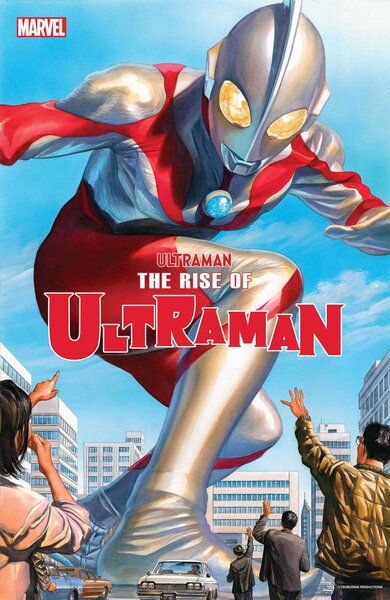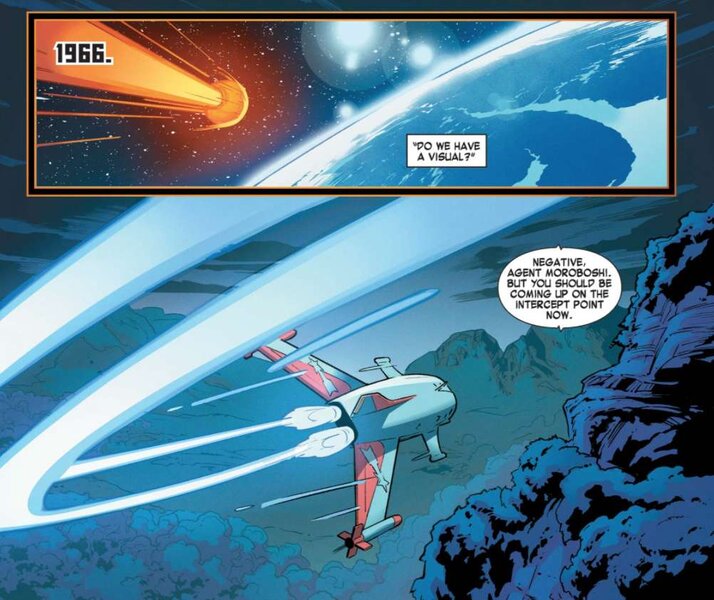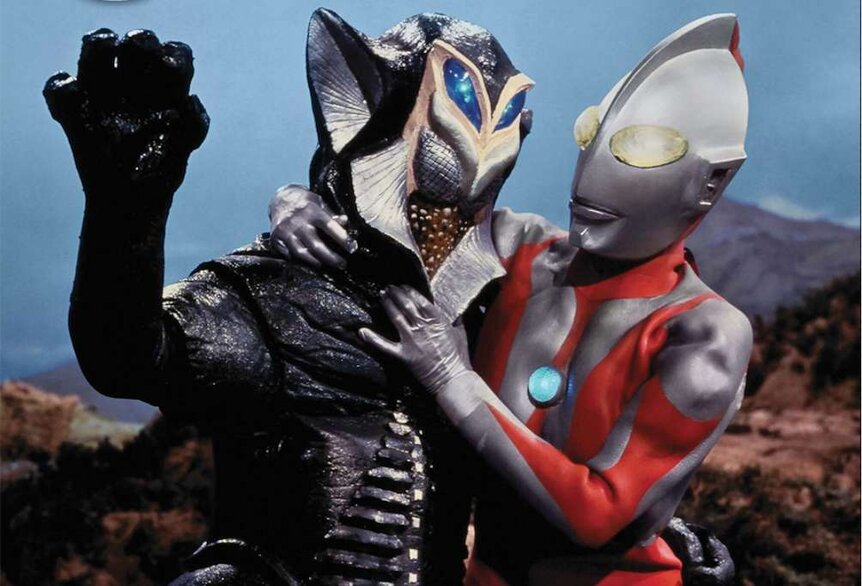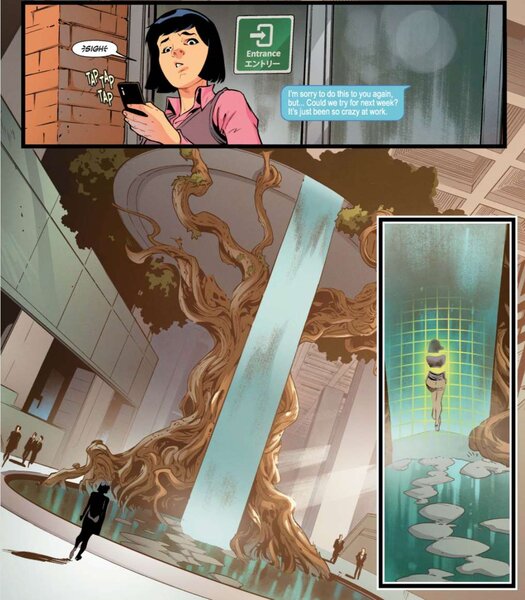Create a free profile to get unlimited access to exclusive videos, sweepstakes, and more!
Kyle Higgins, Mat Groom open up about reinventing the retro cool of Ultraman for Marvel Comics
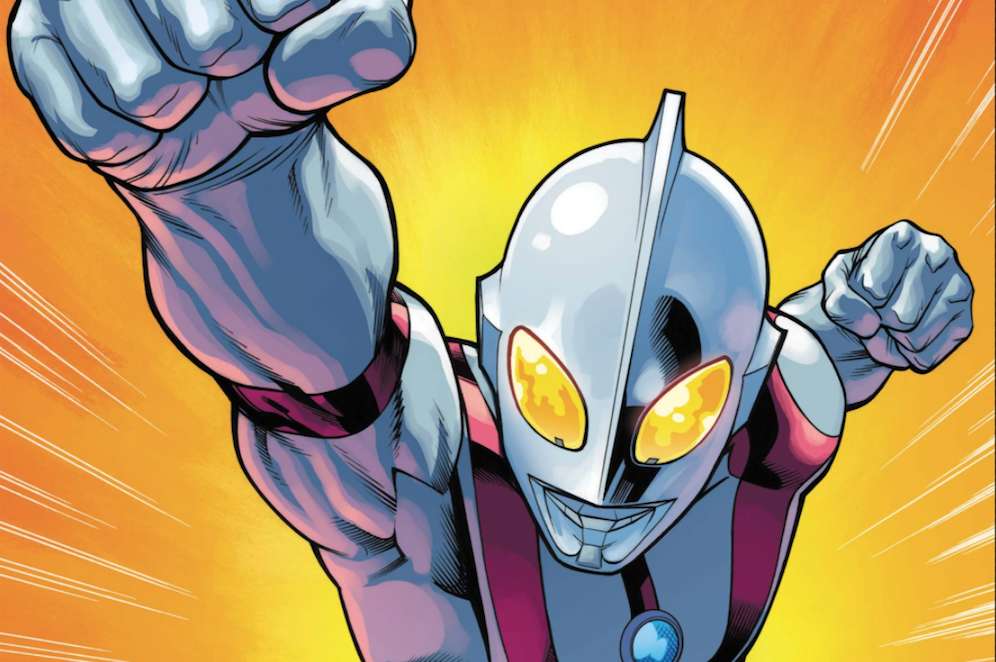
Ever since Ultraman soared into living rooms around the world beginning in 1966 with a smash live-action TV series, the silver-and-red-suited, bug-eyed protector of peace has been a fixture of Earth-bound pop culture.
Through various incarnations in comic books, TV shows, graphic novels, feature films, and last year's Ultraman animated series on Netflix, he's remained an iconic superhero with deep roots in Japanese anime and manga.
Now Marvel Comics, in collaboration with Tsuburaya Productions, will resurrect Ultraman in a fresh ongoing series titled The Rise of Ultraman, arriving on Sept. 9 — and SYFY WIRE has an exclusive preview with revealing details from its two main story architects.
The franchise reboots in a rousing reimagining of the Ultraman phenomenon with The Rise of Ultraman #1, penned by Kyle Higgins (Mighty Morphin Power Rangers, Winter Soldier) and Mat Groom (Self/Made) and fortified with arresting art courtesy of superstar artists Francesco Manna (Avengers, Fantastic Four), Michael Cho (Captain America), and Gurihiru (The Unstoppable Wasp).
Ultraman Day was celebrated Friday, July 17, and honored Ultraman’s first public television appearance in 1966. To mark the occasion, Marvel unleashed a generous stash of interior artwork and variant covers to satisfy the faithful.
SYFY WIRE spoke with writers Kyle Higgins and Mat Groom on capturing the spirit of the source material, delivering a nostalgic adventure worthy of Ultraman's 55-year history, and being inspired by all the things they love most.
How have you reinvented Ultraman for a new generation while retaining the classic character's retro cool?
Higgins: Well, it’s actually a similar situation to when I tackled Power Rangers. With Power Rangers, while I was a fan as a kid, I didn’t really stay up to date on it over the years. So when I was approached to do the Rangers series for Boom! Studios, I had to build something for a different audience, with a different scope, and I was able to look at the material with a bit more of an objective lens. I did a deep dive to figure out what resonated for me when I had watched it as a kid, and what resonated across generations for fans.
With Ultraman, it’s been a similar process. It’s has been about diving into the core of that original series, to look at the DNA of it, why it worked, and how it worked in the era that it was made … and then extrapolating out from that to recontextualize the character and the original story for modern readers.
Groom: Exactly, yeah. We’ll never be able to replicate the incredible sense of scale of seeing something in live action, necessarily, but we can understand how compelling that sense of scale was, and find a way of expressing it in the comic medium. And in the same way, we’ll never be able to replicate the sense of wonder of seeing these incredible Kaiju for the first time, the sense of mystery won’t be the same as the TV series, but we can understand why mystery is such a vital part of the equation, and find our own way to weave mystery into it. So it’s really just about finding the core elements, the heart of it, and then expressing it in a new way.
What associations did you have growing up with Ultraman manga, cartoons, live-action TV, or feature films?
Higgins: That’s a really interesting question, and I think it actually speaks to some of the underlying history in regards to Ultraman … because for our generation, we did not grow up with even reruns of Ultraman in America. What about you, Mat, in Australia? Did you have Ultraman at all?
Groom: No, it was the same way, I think. We really grew up in that black hole of Ultraman content … but I think both of us also grew up with the legacy of Ultraman. We were surrounded by all of the things that Mr. Tsuburaya, through Ultraman, invented. In that way, it was a big influence, certainly on me — and I’m sure on you as well, Kyle. Things like Power Rangers, so many of the conventions of anime I love, big monster films … now, immersing ourselves in Ultraman, it feels like we’re going back to the source of so much of what we love.
Higgins: It is interesting when you consider how many properties that Ultraman has influenced, and where those influences originated … there is a little bit of a John Carter of Mars, or Neon Genesis Evangelion. It was so innovative for its time, so part of the trick now, for us, is to continue to innovate in the spirit of the original property, without just falling back on repeating things that the original property did. If we were to do that, I feel that some of the stories we’d tell would feel a bit stale, because modern audiences have seen so much, in current properties, that directly owes its legacy to Ultraman, without even realizing it.
Can you take us on a quick blast through the plot and what surprises readers might anticipate?
Higgins: Well, it’s an origin — it’s the first time the world will see Ultraman.
Groom: Yeah, and this is an entirely new universe … and it’s a universe with Kaiju, these horrifying creatures that are powered by our darkest and our worst impulses, and we’ve had to explore what that means for our world. What defenses does our world have, even before Ultraman arrives, and what complexities has that introduced to the world, and what problems has that created? So it’s not about Ultraman arriving in the world as you or I might recognize it, it’s quite a different world, under the surface. So we’ll be unpacking how it’s different, and what that all means.
How does Francesco Manna's pencilwork capture the spirit and tone of your Ultraman story?
Higgins: Well, a book like this lives and dies by its artist, and Francesco Manna … he’s not someone who I was familiar with before working together on Ultraman, but he continues to blow me away daily. His pages are dynamic, they’re bold, and his ability to convey scope and scale is really, really incredible. And he just keeps getting better.
You might think, "Well, yeah, an artist on Ultraman needs to be able to draw 100-foot-tall Kaiju," but it’s much harder than you think. Just like, on the original TV show, trying to convey scale using miniatures juxtaposed against actors in suits, getting them to feel truly massive — it’s a craft, and an art form in and of itself. An artist depicting scale in a static image, and across images, is incredibly difficult as well.
And I think as we get into Issue 2 in particular, as we start to see the merger take place — and our version of the merger is quite a bit different than anything else that’s come before — Shin and Ultra, and the differences in scale between them, becoming one … it’s really quite beautiful. Mat and I were just doing the lettering pass last night on Issue 2, and we were both remarking on how elegant and evocative and just stunning it is … it’s been a really fantastic source of inspiration for us.
Groom: Yeah, just to add on to that — I think the two things you need for Ultraman are the scale of the action, and the heart. And I think that’s what’s really blown me away about Francesco’s work. These action scenes, the scale of it, you just feel it in your gut — but also, the characters, his ability to make you empathize with them is really profound as well. He’s just absolutely nailing these two key elements, so I thank my lucky stars every day that we have Francesco on the book.
Now savor our six-page interior art teaser, plus multiple variant covers for Marvel Comics' The Rise of Ultraman #1 contributed by elite artists including Alex Ross, Arthur Adams, Ed McGuinness, Adi Granov, and Olivier Coipel.
